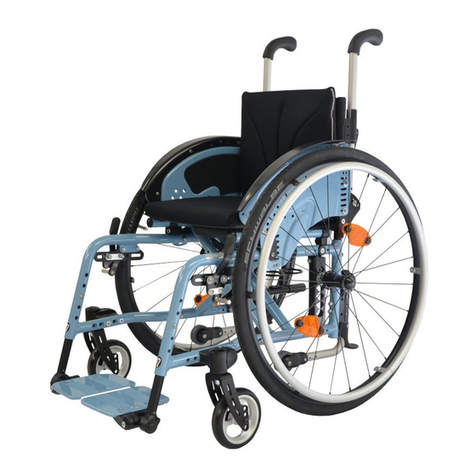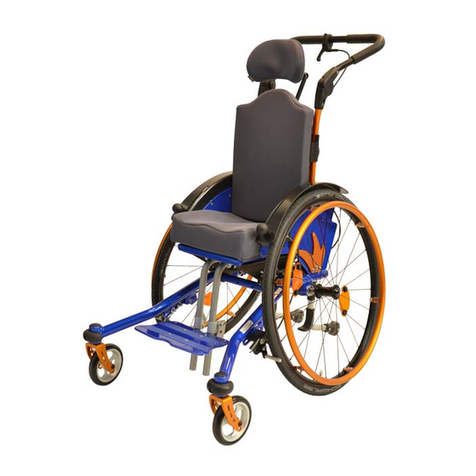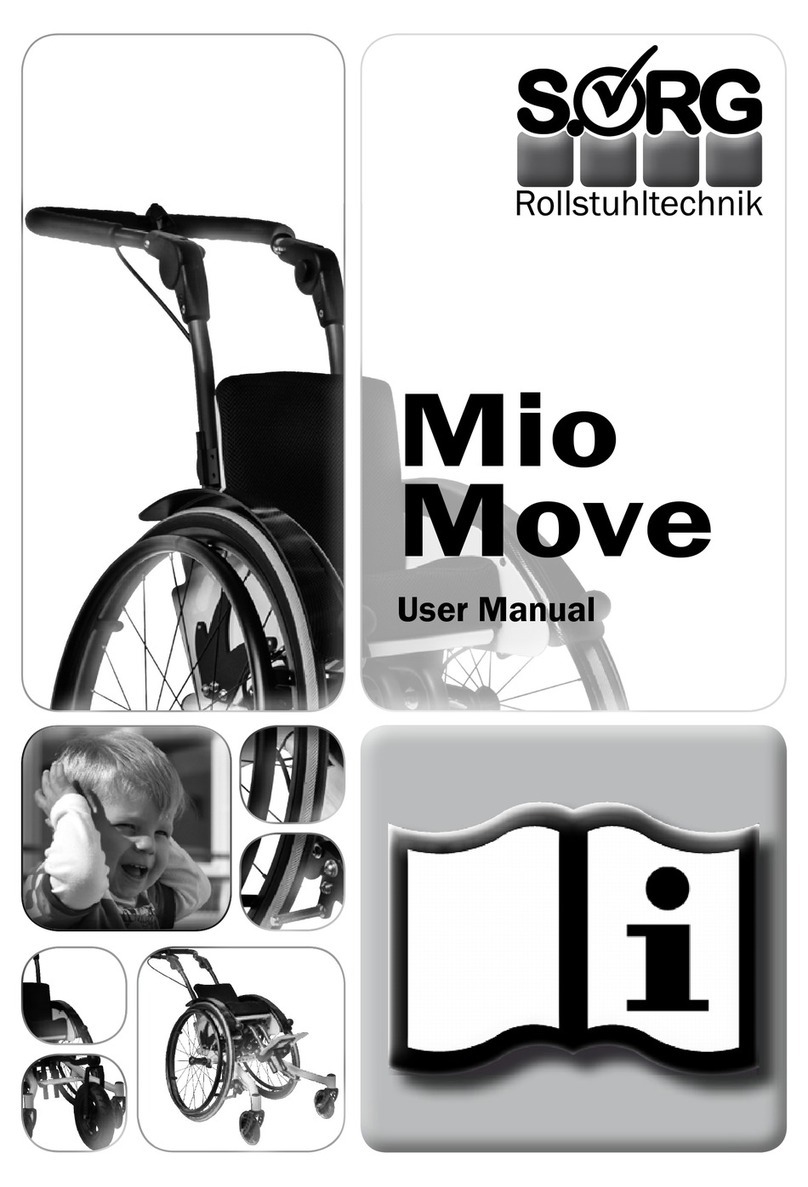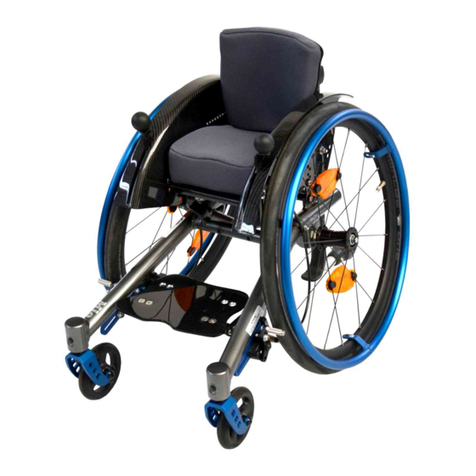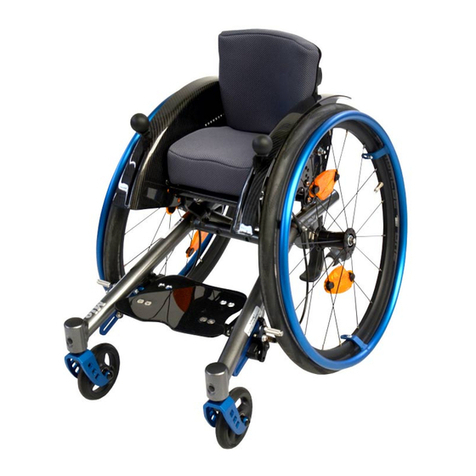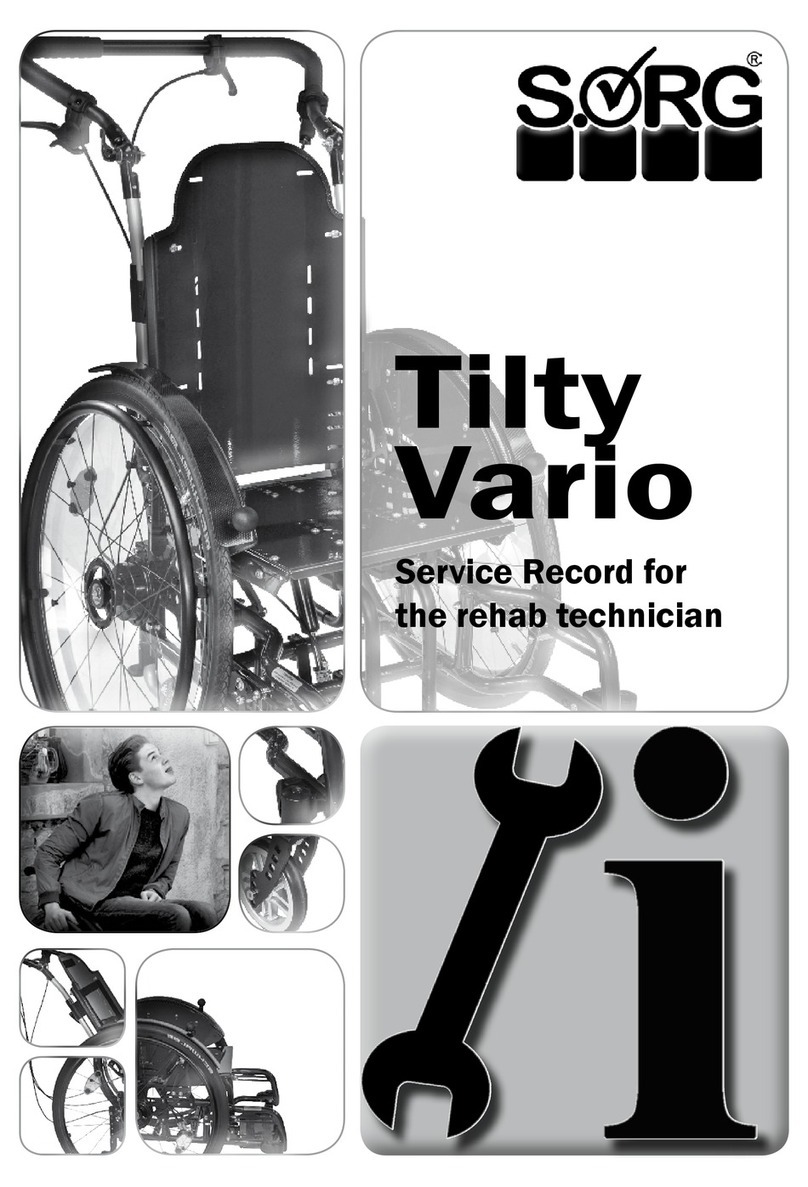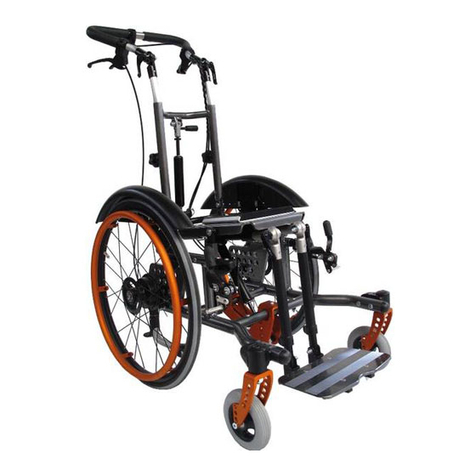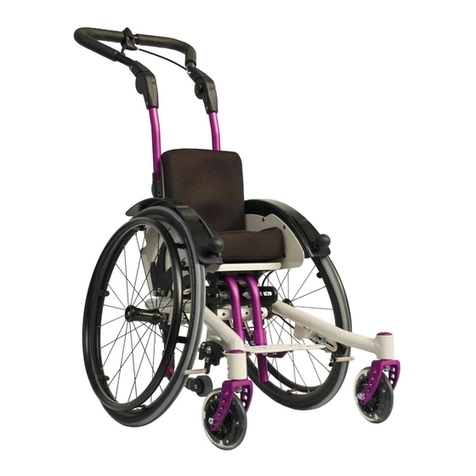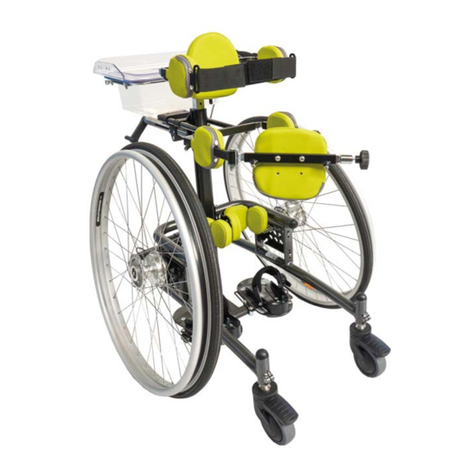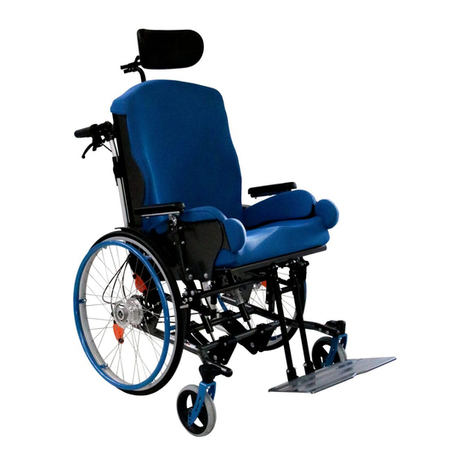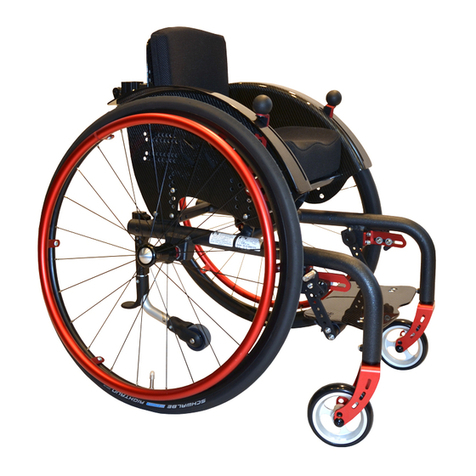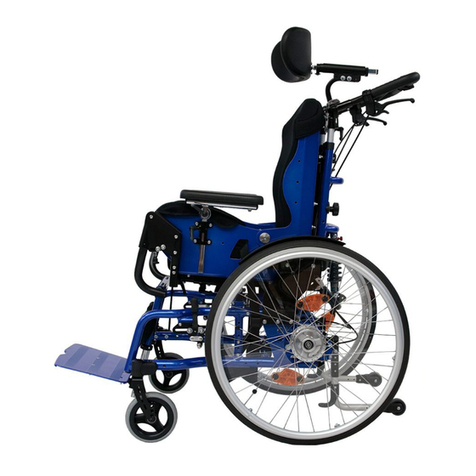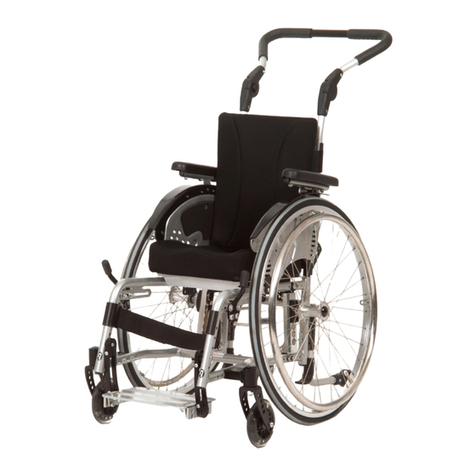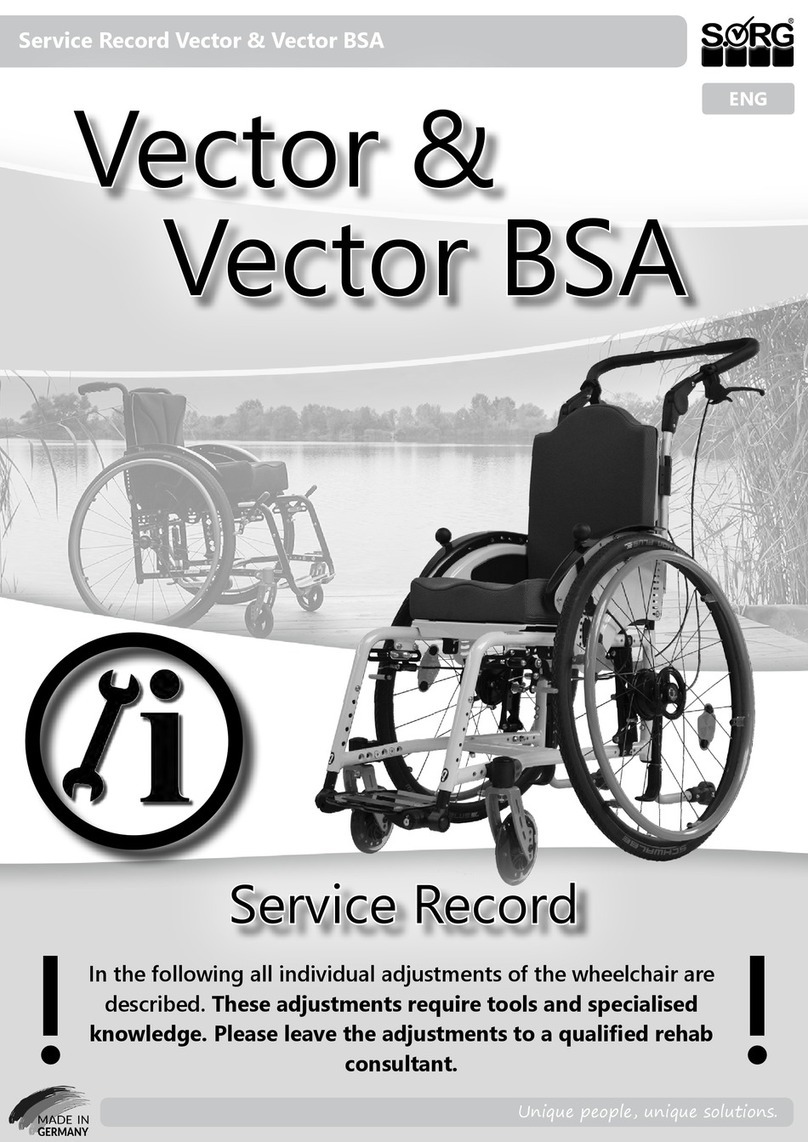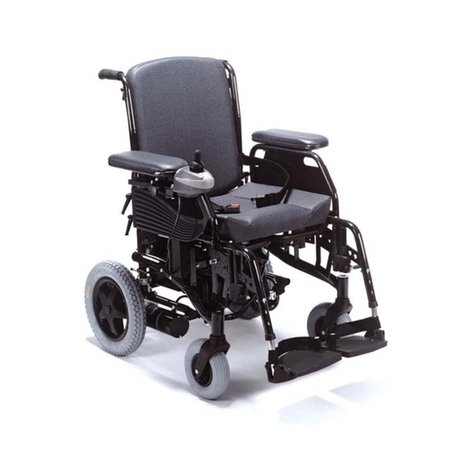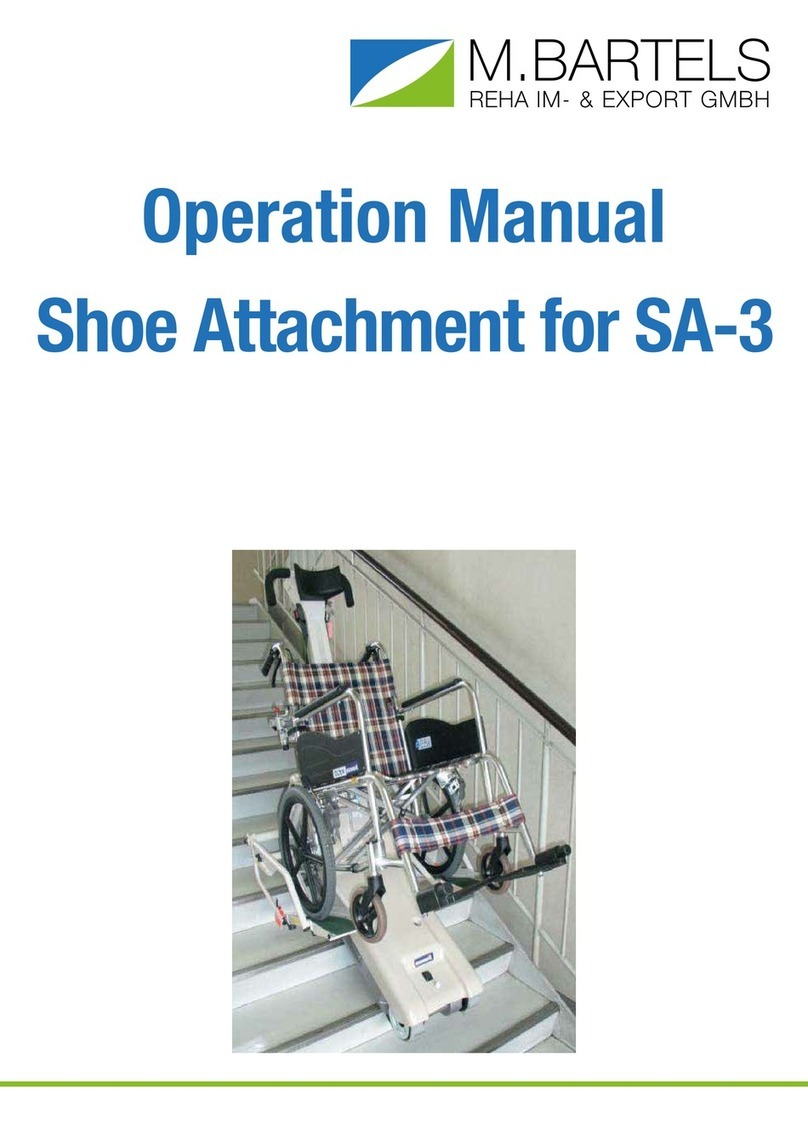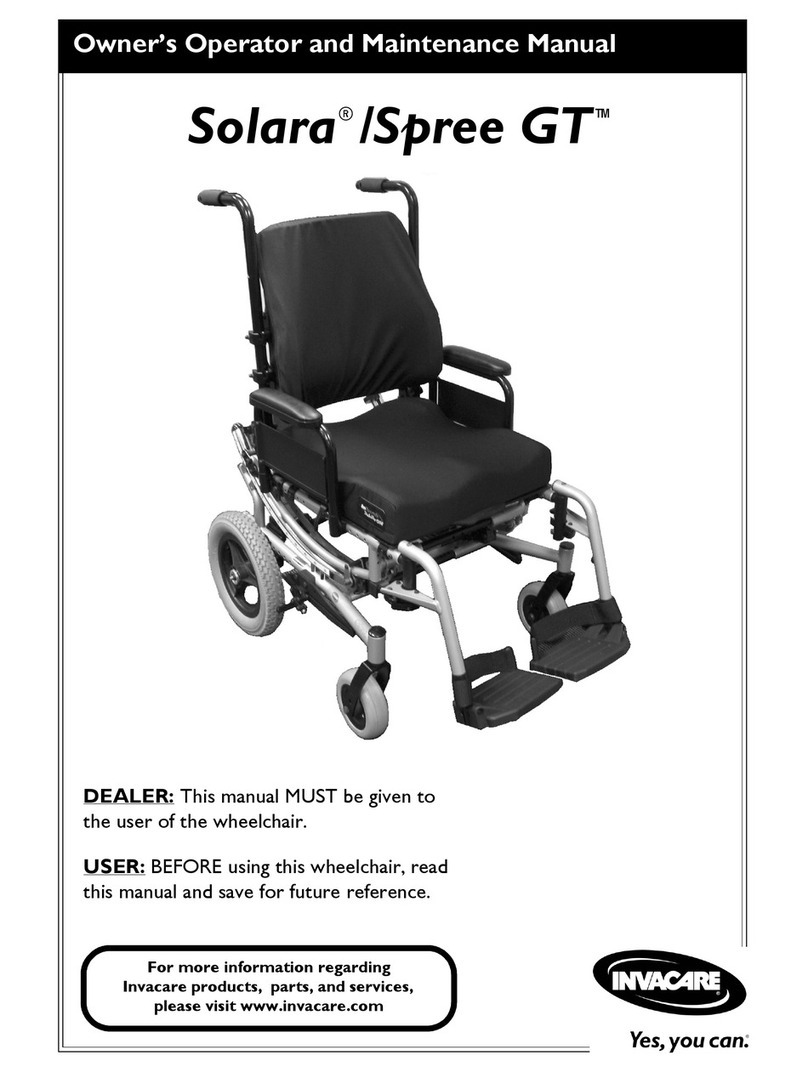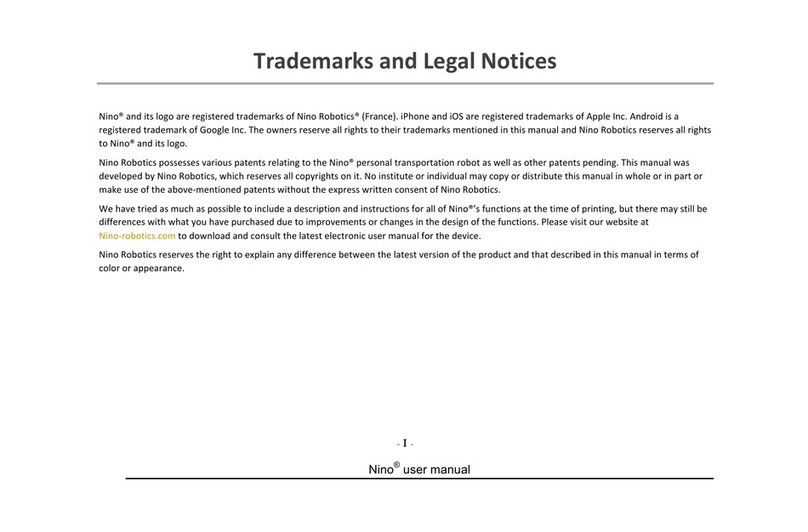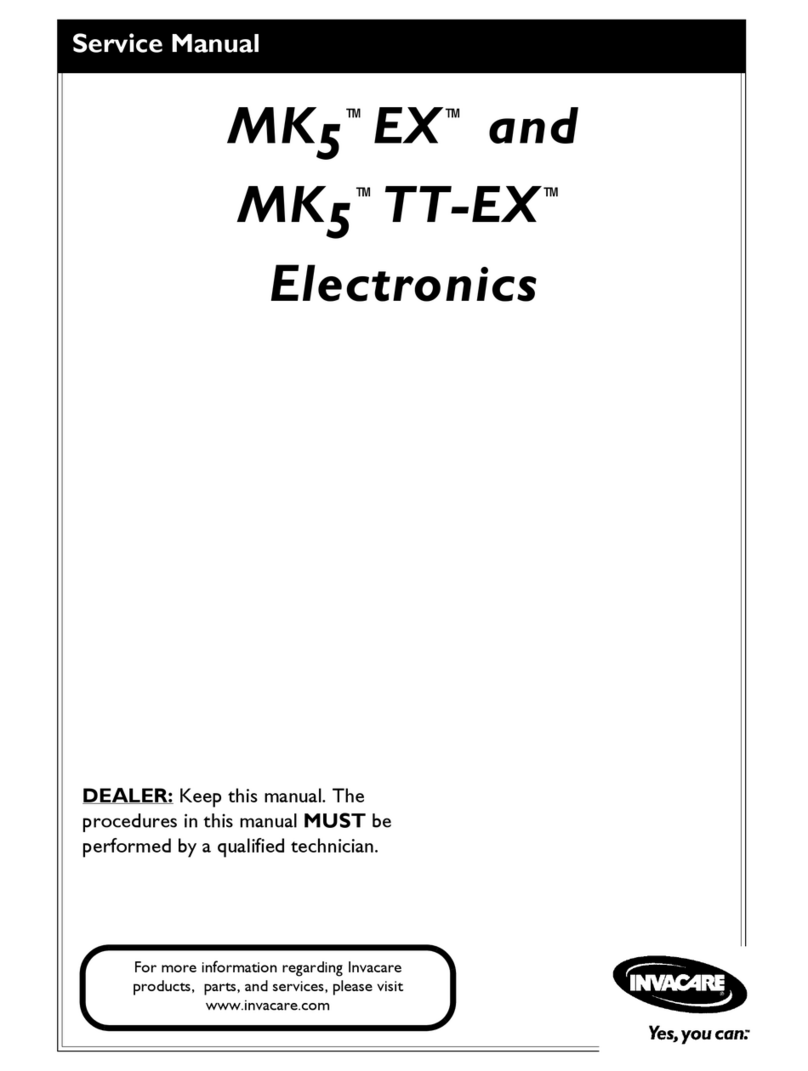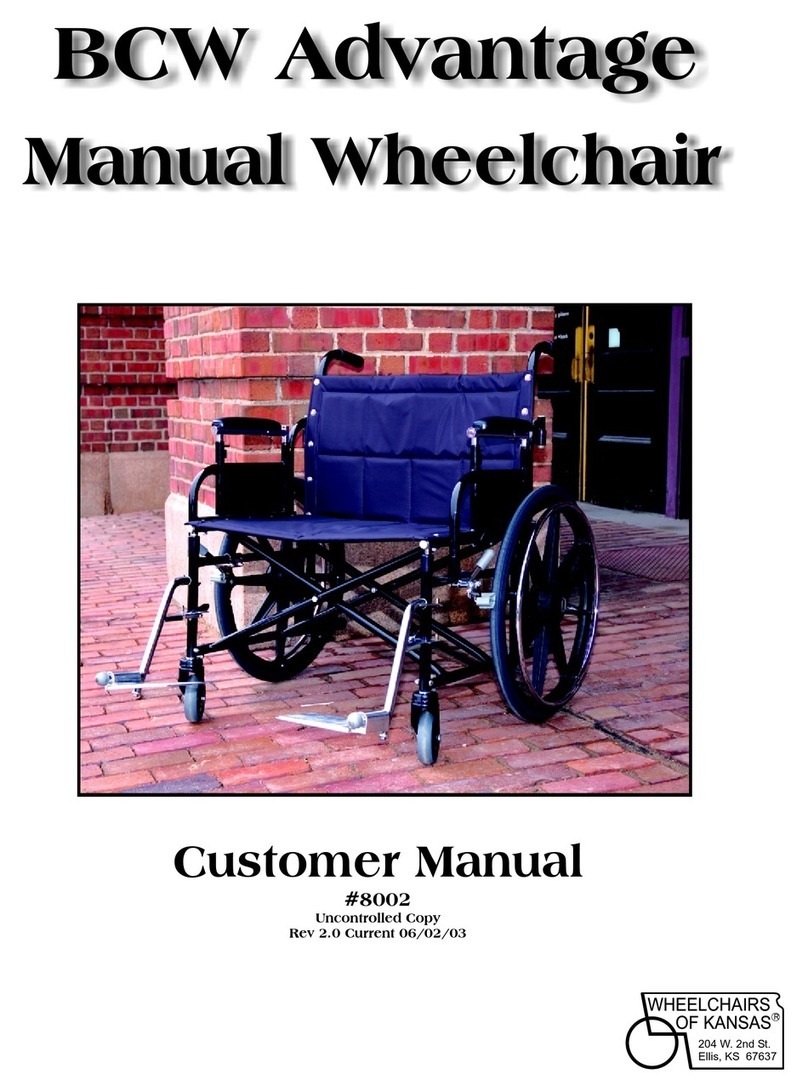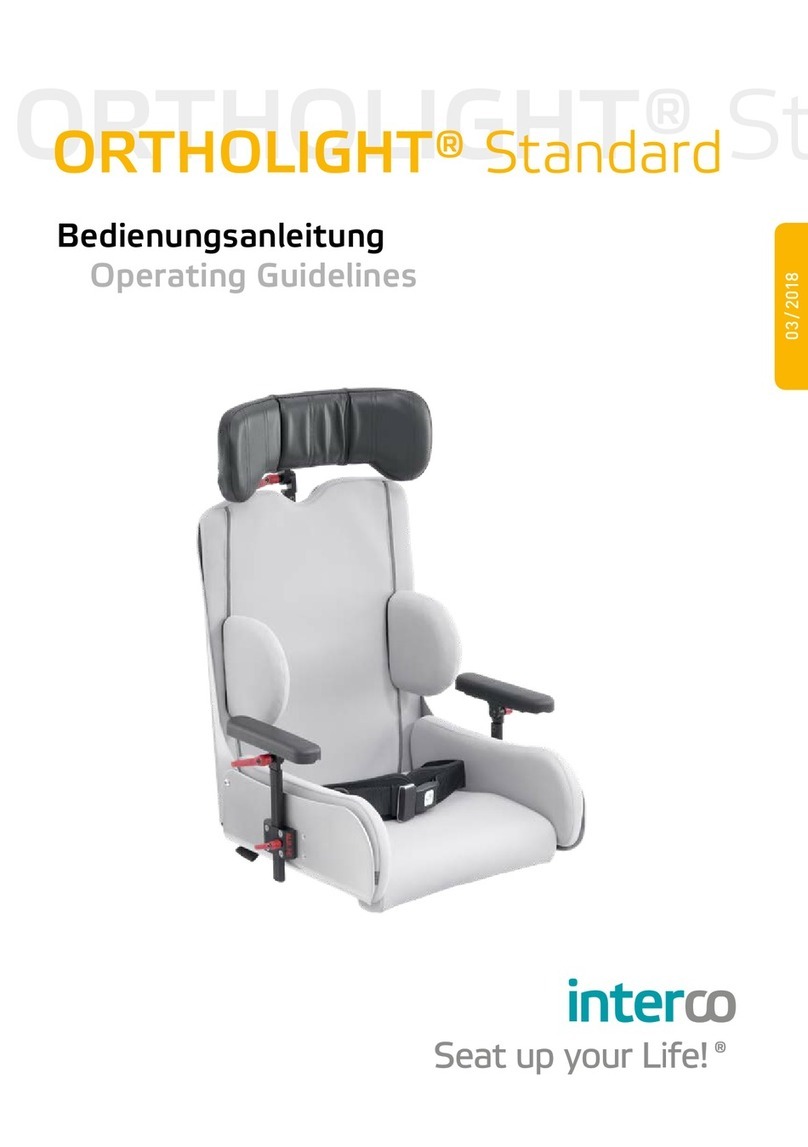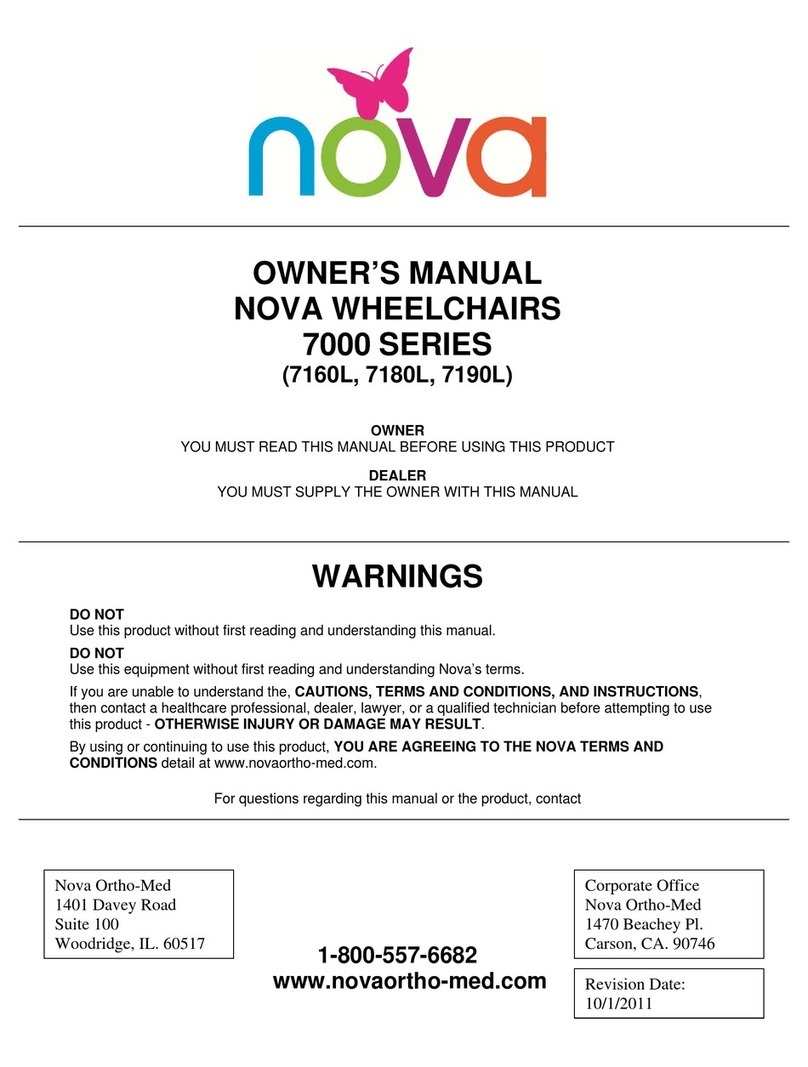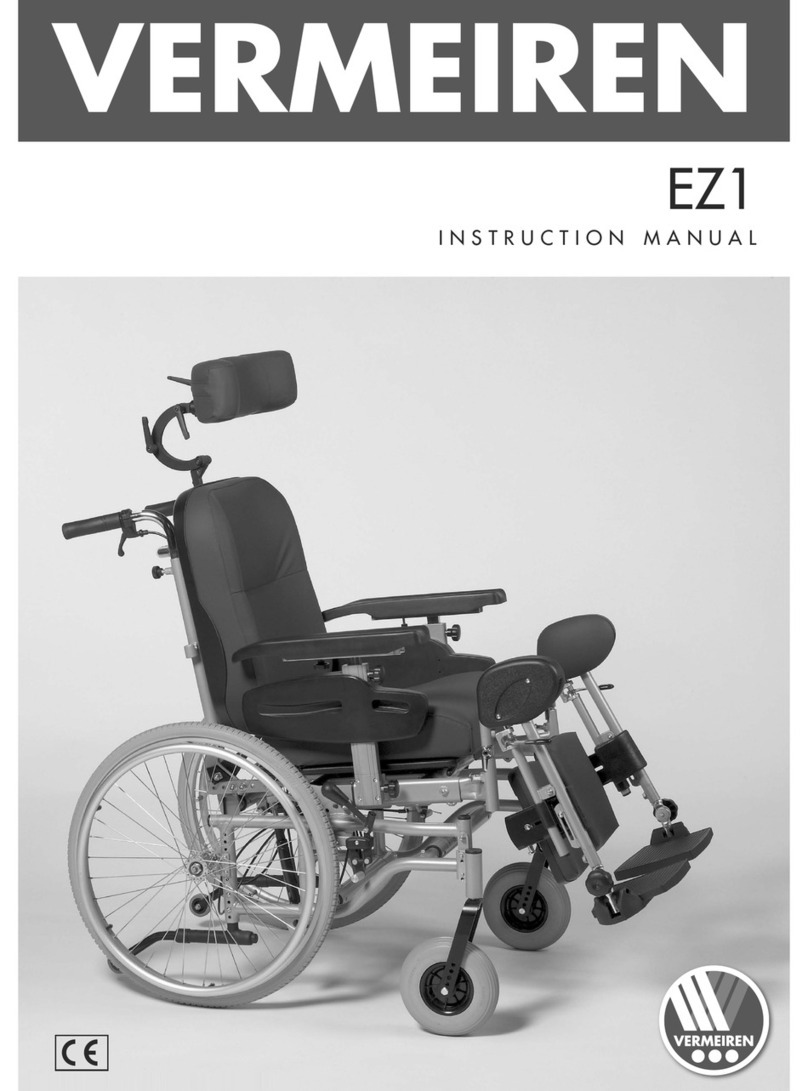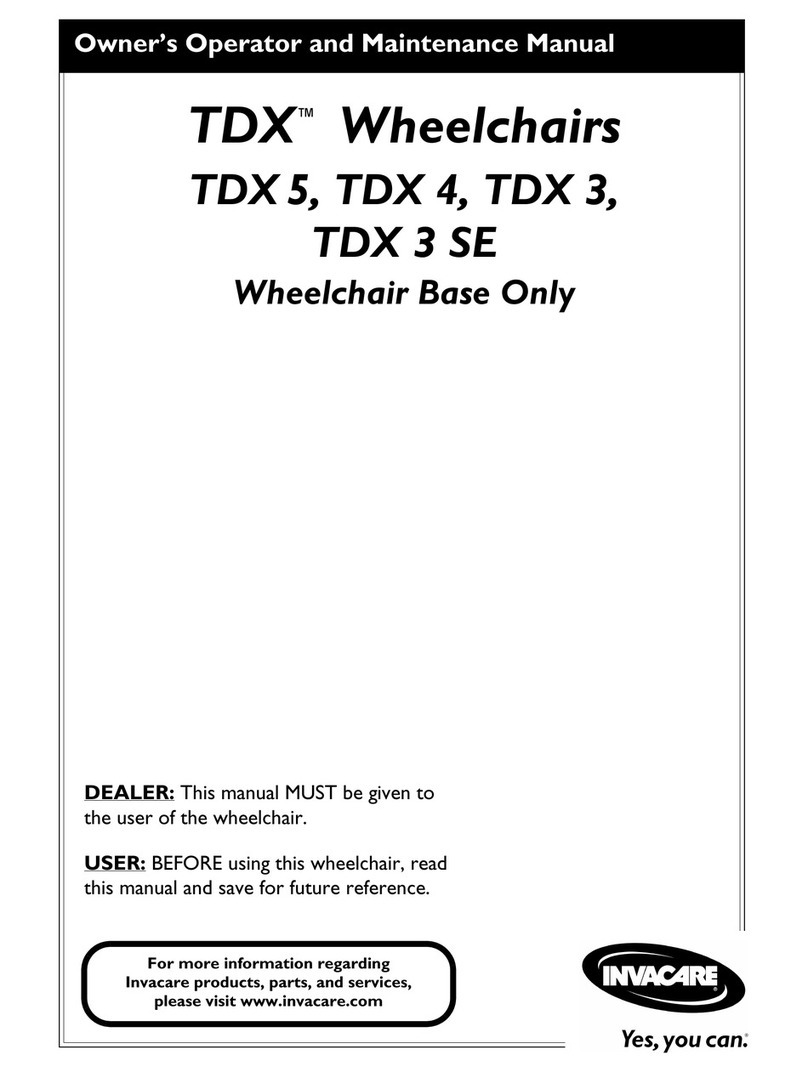5
1 Preamble
1.1 General information
The wheelchair has been built, adjusted and given to
you operable according to your individual instructions.
A qualied Technician will make any changes
necessary, should modication be needed during use.
As any other aid, a wheelchair is a technical device
that can hold risks if not properly used. This brochure
is to help you familiarize yourself with the wheelchair
and its functions.
ATTENTION
Read the following instructions and manuals
carefully.
User manual
Info-brochure Crash Test ISO 7176-19
ATTENTION
If the user of the wheelchair is a child or a person
with limited competence, the parents or authorized
supervisor have to make sure that they have fully
understood the handling of the wheelchair before it
is rst used.
If you have any questions your medical supply store
or our competent team is glad to assist you (+49
07254/92790).
This user manual is directed to both you and
your rehab technician. It contains instructions on
the correct adjustments of Loop to your physical
situation.
1.2 Signs and symbols
ATTENTION
This is how individual-related safety aspects of
utmost importance are indicated.
�INDICATION
This is how possible indications of utmost
importance are labelled.
INFORMATION
This is how INFORMATION on mounting and
adjustment work is labelled.
READ
This refers to other chapters within the brochure or to
additional material.
BOLD PRINT
Text in bold print highlights important passages or
remarks.
1.3 Indication
Loop is indicated
• in the pediatric and geriatric area for all
therapy forms for changing position and
positioning of immobile and mobile persons
• in house and stationary area for up righting
the patients from a lying position to an upright
sitting position and to preserve and/or rebuild
other functions,
• to stimulate and strengthen the whole
metabolism, the nervous system and/or the
whole cardiovascular system
• to preserve, rebuild and to activate the whole
muscle tone or individual muscle groups
• to reactivate after a severe concussion
• to build and to strengthen the whole bone
structure
• to slow the process of progressive scoliosis
• to regulate all forms of dyskinesia ( e.g.
missing/limited head control)
• by all dystrophic or atrophic muscle changes
• by all forms of Paresis and/or neuromuscular
sicknesses
1.4 Counter indications
ATTENTION
The active and/or passive use of Loop must
be explicitly cleared by the handling doctor or
therapist under the following circumstances and/or
symptoms:
• User without intact skin,
• with severe tonicity deregulation.
�INDICATION
We are not liable for health problems and/or other
damages on persons or objects that occurred
from using the Loop, despite the above described
conditions.
1.5 Specification Loop
Loop is a seat shell base frame that grows with your
child, which is adjustable for children, adolescents
and adults with the following details:
• 3 frame sizes with four frame widths each (each
frame width is adjustable by a max. of 4
cm),
• Frame size 1 frame width 30-42 cm in 4 cm
intervals (usable width = frame width + 4 cm)
suitable at a seat depth of 32 cm,
• Frame size 2 frame width 34-46 cm in 4 cm
intervals (usable width = frame width + 4 cm)
suitable at a seat depth of 38cm,
• Frame size 3 frame width 38-50 cm in 4 cm
intervals (usable width = frame width + 4 cm)
suitable at a seat depth of 44cm,
• Back height an optional 43 or 58 cm,
• Back unit is adjustable a min. of 6 cm
